.jpg)
FNB EDU
FNB EDU offers resources for individuals who are teaching their children, school students, or others about financial issues.
The FNB Vault is First National Bank's collection of free financial literacy resources, which are divided into sections according to learning levels starting at age 3 and continuing throughout a learner's lifetime. Because everything is accessible online, learning can happen in a classroom, at-home or other places, like a library, community center, religious center, and at resource centers serving people looking for a job, a place to live, or are facing money problems.
Each section of FNB Vault identifies the age appropriate skills that will help increase the knowledge and money and financial empowerment. These are particularly beneficial to educators when identifying other materials or activities that can support their financial literacy curriculum.
Iowa Department of Education
Iowa has established financial literacy requirements as a condition of high school graduation. Learn more:
|
|
Money Smart for Grades 6 to 8
This standards-aligned curriculum series empowers educators with engaging activities to integrate financial education instruction into subjects such as math, English, and social studies. Here is a brief overview of what you will find:
- Educator’s Guide with lessons and hands-on activities to promote student participation in the learning process. Grade-level modifications are identified throughout the activities.
- Teacher Presentation Slides, optional overhead visuals that include fill-in charts to support the activities of each lesson.
- Student Guide features worksheets for students based on topics covered in each lesson that can be used at school or at home. The worksheets can be found in the Educator Guide for grades Pre-K-2, and in a standalone Student Guide for grades 3-12.
- Parents’/Caregivers’ Guide with a summary of the key concepts covered in the module, and that offers exercises, activities, and conversation-starters for parents.
Watch the video to learn more about how the Money Smart curriculum works. Then get started.
Use Money Smart
|
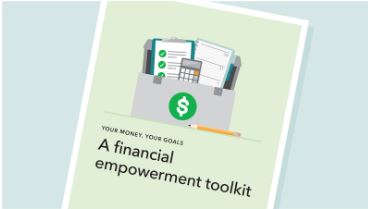
|
Your Money, Your Goals Toolkit
This 244-page toolkit from the Consumer Financial Protection Bureau is loaded with information and tools that can help you have money conversations with the people you serve. Use the tools to help achieve goals and work through challenges.
You can use the toolkit to help people:
- Make spending decisions that can help them reach their goals.
- Order and fix credit reports
- Make decisions about repaying debts and taking on new debt
- Keep track of their income and bills
|
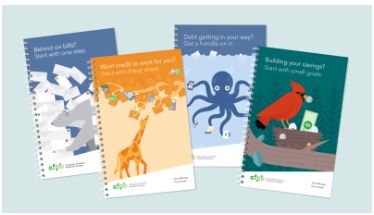
|
Booklets to help talk about money
These colorful, compact booklets from the Consumer Financial Protection Bureau can help you talk with people about money topics that are important to them. Each booklet includes a selection of simplified tools from the Your Money, Your Goals toolkit - all focused on a common financial stressor.
|
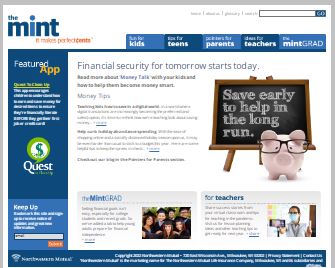
|
The Mint. It makes perfect cents.
The Mint is hosted by Northwestern Mutual and is designed to help you teach 6-12 graders how to manage money wisely. In addition to the resources for parents and teachers, the site is abundant with resources for kids and teens.
If you teach at a school that does not offer a full or partial course in money management or economics, you are urged to incorporate lessons into your social studies or math classes.
Included are lesson plans developed by the National Council on Economic Education. Please feel free to work online or print hard copies to use in your classroom.
.
|
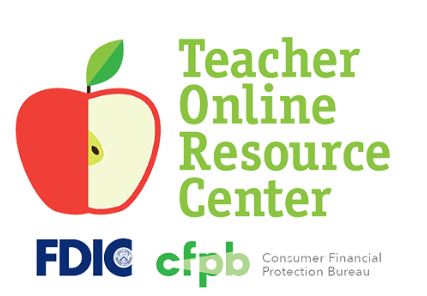
|
Teacher Online Resource Center
The Federal Deposit Insurance Corporation (FDIC) and the Consumer Financial Protection Bureau (CFPB) are working together to make it easier for schools to bring financial education into the classroom by developing a one-stop-shop for educators.
Here you will find tools to help you teach financial education including lesson plans, videos, and other resources.
In support of this effort, the FDIC and CFPB have worked with banks to create hands-on programs including youth savings accounts connected to financial education for schools and communities.
The FDIC also offers train-the-trainer videos to orient educators and instructors to the Money Smart materials for young adults and adults.
|
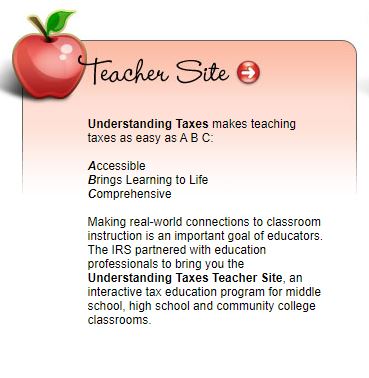
|
Understanding Taxes Teacher Site
Does teaching about taxes seem as intimidating as completing your yearly tax forms? Don't worry! Understanding Taxes, offered by the Internal Revenue Service, can be customized to fit your own personal teaching style. You have the freedom to choose which activities and methods of instruction work best to meet the needs of your students.
Teaching taxes can take a traditional approach as students complete downloaded worksheets, classroom activities, and assessment pages. Or, students can complete work online and take part in interactive activities and simulations.
This site offers:
- Custom Resource List
- Lesson Plans
- Educational Standards
- Downloads
|
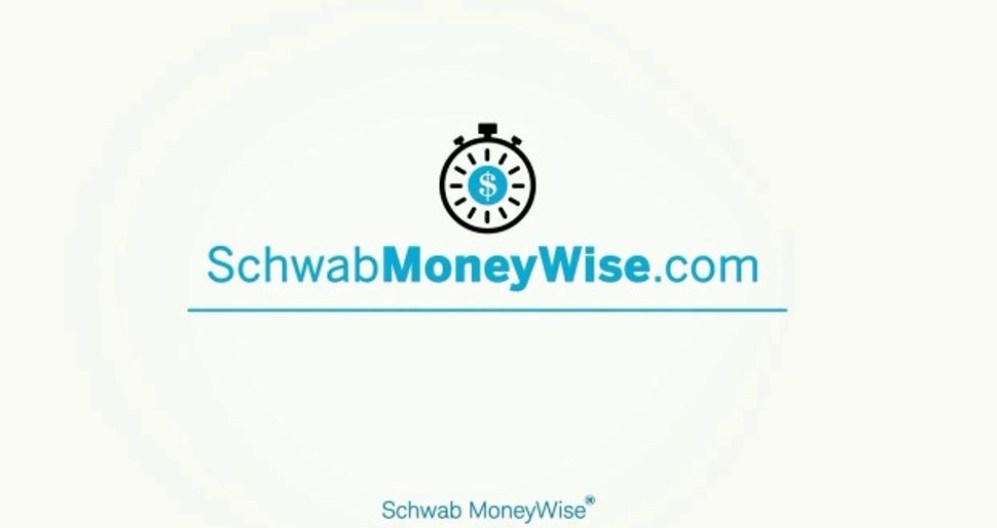
|
MoneyWise
Since 2004, Charles Schwab Foundation has partnered with the Boys & Girls Clubs of America to create and delivery Money Matters: Make it Count. Get free financial literacy lesson plans developed by teachers for teachers. Search by grade level for engaging projects.
Download Free Lesson Plans
|

|
Visa's Practical Money Skills for Life Lessons
Lessons for grades 7-8 . Junior high school students can prepare for the real world with these activities. Included with each lesson is a Teacher's Guide, Student Activities, PowerPoints, and Presentations, which are all downloadable.
Lessons
- Lesson 1: Making Decisions
- Lesson 2: Making Money
- Lesson 3: The Art of Budgeting
- Lesson 4: Living on your Own
- Lesson 5: Buying a Home
- Lesson 6: Banking Services
- Lesson 7: Credit
- Lesson 8: Credit Cards
- Lesson 9: Cars and Loans
- Lesson 10: The Influence of Advertising
- Lesson 11: Consumer Awareness
- Lesson 12: Saving and Investing
- Lesson 13: In Trouble
- Lesson 14: Consumer Privacy
Download Free Lesson Plans
|
Other Financial Education Programs and Resources